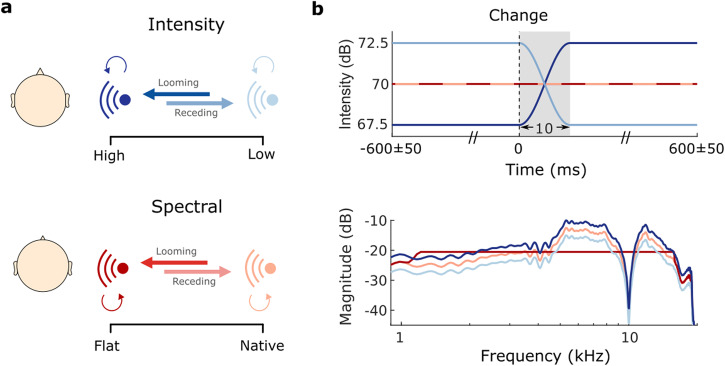Fig. 1. Experimental design.
a Illustration of experimental factors movement and cue type. The transition between two sounds of different intensities (top, blue) or spectral shapes (bottom, red) creates the sensation of a moving sound source. Thick arrows represent a 50% transition probability for motion trials (dark = looming; light = receding), while thin circular arrows indicate a 50% probability for static trials. b Magnitude profile over time (top panel) and frequency (bottom panel) of all implemented stimuli. Filtering by the native spectral shape evokes a spatially externalized auditory percept44. Sounds devoid of native spectral characteristics (flat spectrum) do not elicit this externalization, making sounds appear close to one’s ear.

